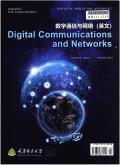Eavesdropping Minimization via Transmission Power Control in Ad-Hoc Wireless Networks
IF 7.5
引用次数: 42
Abstract
Reconnaissance activity is the most frequent incident on computer networks since 2002. In fact, most attacks (including DoS attacks) are usually preceded by reconnaissance activity. In order to defend against reconnaissance activity in ad-hoc wireless networks, we propose to use transmission power control as an effective mean to minimize the eavesdropping risk. Our main contributions are as follows: first, we cast the w-th order eavesdropping risk as the maximum probability of packets being eavesdropped when there are w adversarial nodes in the network. Second, we derive the closed-form solution of the 1st order eavesdropping risk as a 3rd-order polynomial function of normalized transmission radius. This derivation is based on the recently proposed model by El Gamal which assumes a uniform distribution of user nodes. Then we generalize the model to allow arbitrary user nodes distribution and prove that the uniform user distribution actually minimizes the 1st order eavesdropping risk. This result plays an essential role in deriving the first analytical bounds for the eavesdropping risk given arbitrary user distribution. Our simulation results show that for a wide range of non-uniform traffic patterns, the eavesdropping risk has the same order of magnitude as the corresponding uniform traffic cases基于传输功率控制的Ad-Hoc无线网络窃听最小化
自2002年以来,侦察活动是计算机网络上最频繁的事件。实际上,大多数攻击(包括DoS攻击)通常在进行侦察活动之前进行。为了防御自组织无线网络中的侦察活动,我们提出将传输功率控制作为降低窃听风险的有效手段。我们的主要贡献如下:首先,我们将第w阶窃听风险转换为网络中有w个敌对节点时数据包被窃听的最大概率。其次,我们导出了一阶窃听风险的闭型解,它是归一化传输半径的三阶多项式函数。该推导基于El Gamal最近提出的假设用户节点均匀分布的模型。然后我们将模型推广到允许任意用户节点分布,并证明了均匀用户分布实际上最小化了一阶窃听风险。该结果对于导出任意用户分布下窃听风险的第一解析界具有重要意义。仿真结果表明,在大范围的非均匀流量模式下,窃听风险与对应的均匀流量情况具有相同的数量级
本文章由计算机程序翻译,如有差异,请以英文原文为准。
求助全文
约1分钟内获得全文
求助全文

 求助内容:
求助内容: 应助结果提醒方式:
应助结果提醒方式:


